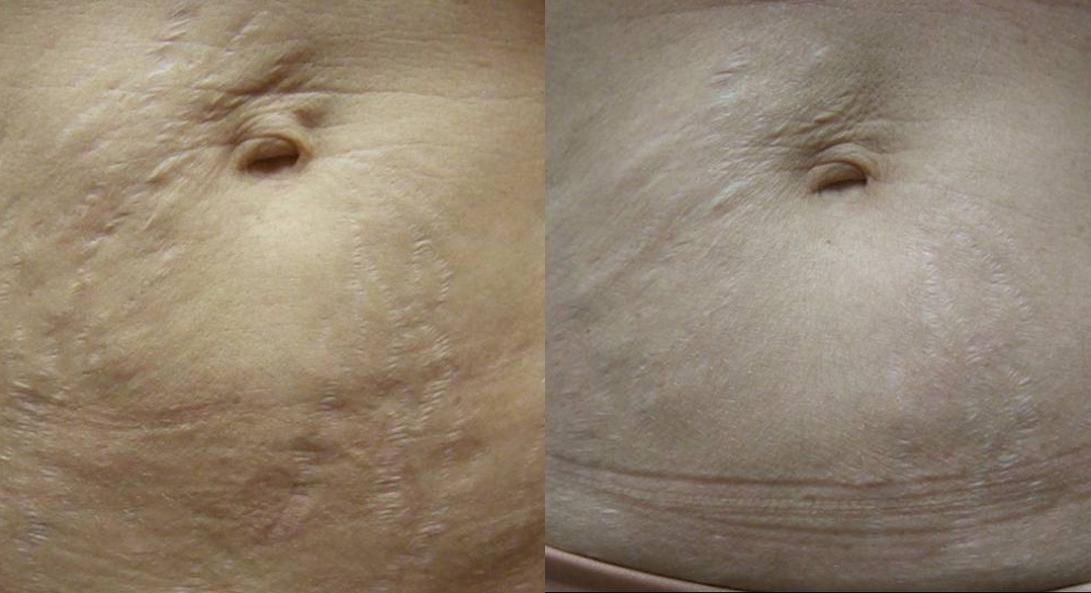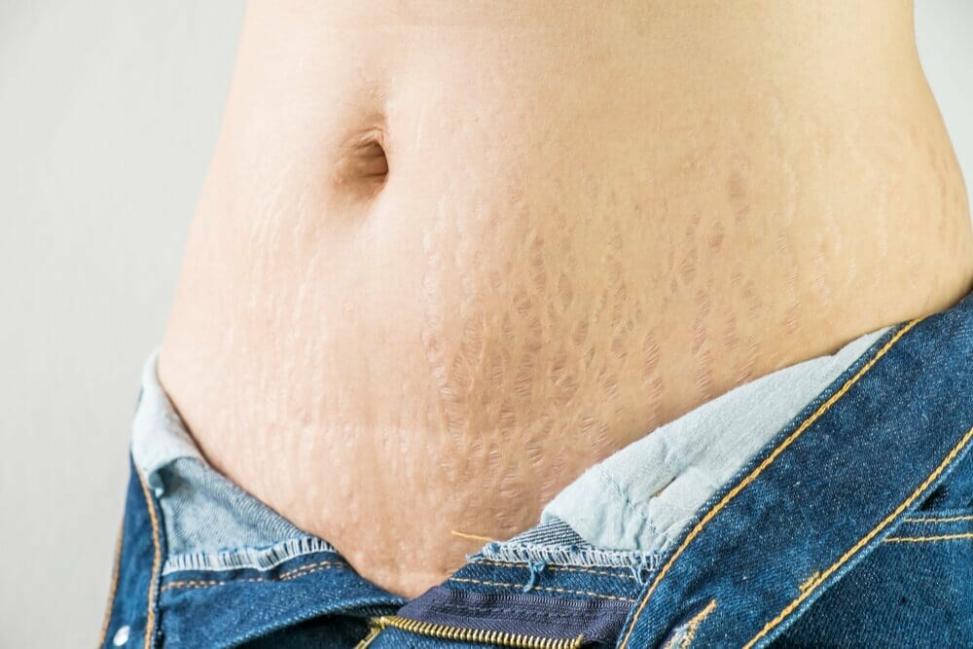What Are the Potential Side Effects of Microneedling for Stretch Marks?
Microneedling, also known as collagen induction therapy, is a minimally invasive skin rejuvenation procedure that involves creating controlled micro-injuries to the skin to stimulate collagen and elastin production. While it has gained popularity for its effectiveness in treating various skin concerns, including stretch marks, it is essential to be aware of the potential side effects associated with the procedure.

Definition Of Microneedling
Microneedling involves using a device with tiny needles to create microscopic punctures in the skin. This controlled injury triggers the body's natural healing response, leading to increased collagen and elastin production, which can improve the appearance of stretch marks.
Brief Overview Of Microneedling For Stretch Marks
Microneedling for stretch marks is a non-surgical treatment that aims to reduce the visibility and improve the texture of stretch marks. It works by stimulating the production of collagen and elastin, which are essential proteins responsible for skin elasticity and firmness. Multiple microneedling sessions are typically recommended to achieve optimal results.
Thesis Statement: Potential Side Effects Of Microneedling For Stretch Marks

While microneedling is generally considered safe, it is not without potential side effects. These side effects can range from temporary and mild to uncommon and more severe. Understanding these potential risks is crucial before undergoing the procedure.
I. Common Side Effects Of Microneedling For Stretch Marks
Temporary Side Effects
- Redness and Swelling: These are common and typically subside within a few days.
- Bruising: Mild bruising may occur, especially in areas with thinner skin.
- Itching and Dryness: The skin may feel itchy and dry as it heals.
- Crusting and Flaking: Tiny scabs or crusts may form as the skin heals, followed by flaking.
- Sun Sensitivity: The treated area may become more sensitive to sunlight.
- Mild Pain or Discomfort: Some individuals may experience mild pain or discomfort during the procedure.
Uncommon Side Effects
- Infection: Proper sterilization and technique are crucial to minimize the risk of infection.
- Hyperpigmentation: In some cases, the treated area may develop darker patches of skin.
- Hypopigmentation: Conversely, the treated area may become lighter in color.
- Scarring: Although rare, scarring can occur if the procedure is performed incorrectly or if the skin does not heal properly.
- Allergic Reactions: Some individuals may experience allergic reactions to the numbing cream or other products used during the procedure.
II. Factors Influencing The Severity Of Side Effects
The severity of side effects can vary depending on several factors:
- Depth of Microneedling: Deeper microneedling may result in more pronounced side effects.
- Number of Treatment Sessions: Multiple sessions may increase the risk of side effects.
- Individual Skin Sensitivity: Some individuals have more sensitive skin and may experience more side effects.
- Overall Health and Well-being: Individuals with compromised immune systems or certain medical conditions may be more prone to side effects.
- Experience and Skill of the Practitioner: Choosing a qualified and experienced practitioner can minimize the risk of complications.
III. Minimizing The Risk Of Side Effects

There are steps you can take to minimize the risk of side effects:
- Choosing a Qualified and Experienced Practitioner: Select a practitioner who has undergone proper training and has experience in performing microneedling.
- Following Pre- and Post-Treatment Instructions: Adhere to the practitioner's instructions regarding skincare, sun protection, and other precautions.
- Avoiding Sun Exposure and Harsh Skin Care Products: Avoid excessive sun exposure and harsh skin care products that can irritate the treated area.
- Using Moisturizers and Sunscreen Regularly: Keep the treated area moisturized and protected with sunscreen to promote healing and prevent sun damage.
IV. When To Seek Medical Attention
In most cases, side effects from microneedling are mild and resolve on their own. However, it is essential to seek medical attention if you experience the following:
- Signs of Infection: Increased redness, swelling, or discharge from the treated area.
- Persistent Pain or Discomfort: If pain or discomfort persists beyond a few days.
- Severe Allergic Reactions: If you experience severe itching, hives, or difficulty breathing.
V. Summary Of Potential Side Effects
Microneedling for stretch marks is generally safe, but potential side effects can range from temporary and mild to uncommon and more severe. These side effects can be influenced by various factors, including the depth of microneedling, the number of treatment sessions, individual skin sensitivity, overall health, and the experience of the practitioner. By choosing a qualified practitioner, following pre- and post-treatment instructions, and taking proper care of the treated area, you can minimize the risk of side effects.
It is crucial to have informed consent and realistic expectations before undergoing microneedling for stretch marks. Discuss the potential benefits and risks with your practitioner and ensure you understand the procedure and its limitations. Consulting a qualified practitioner who can assess your skin and provide personalized advice is essential to achieve the best results while minimizing the risk of side effects.
YesNo

Leave a Reply